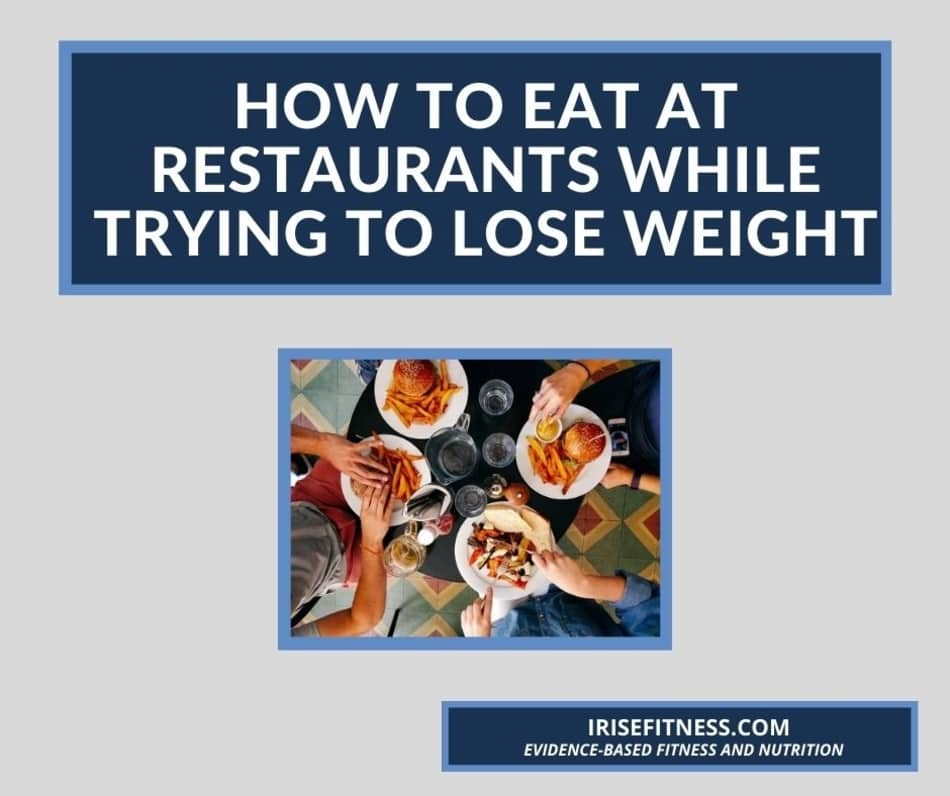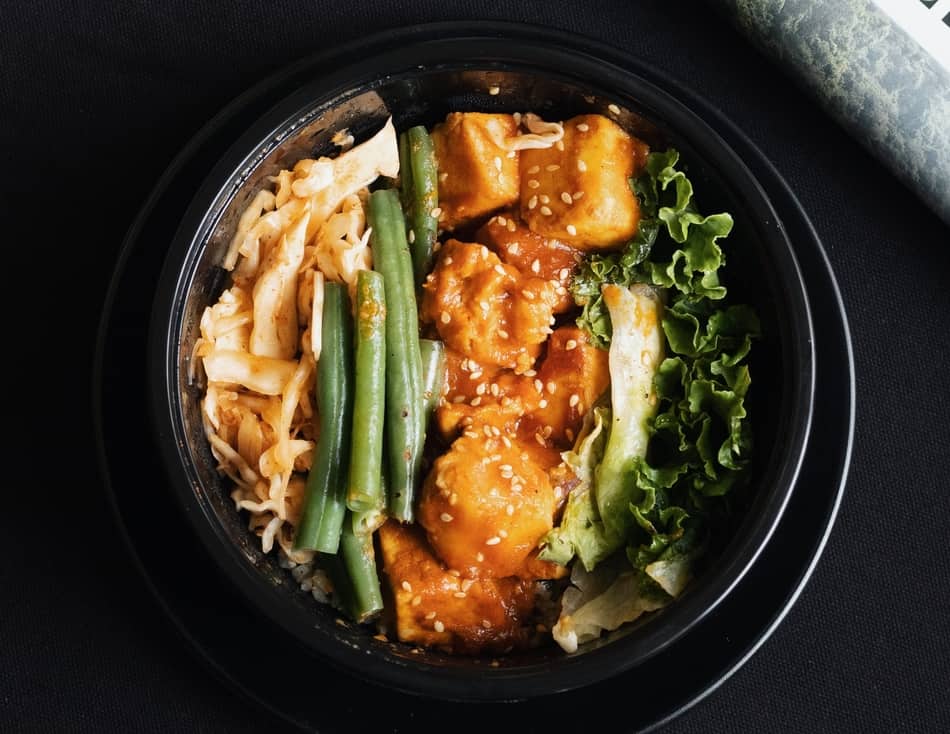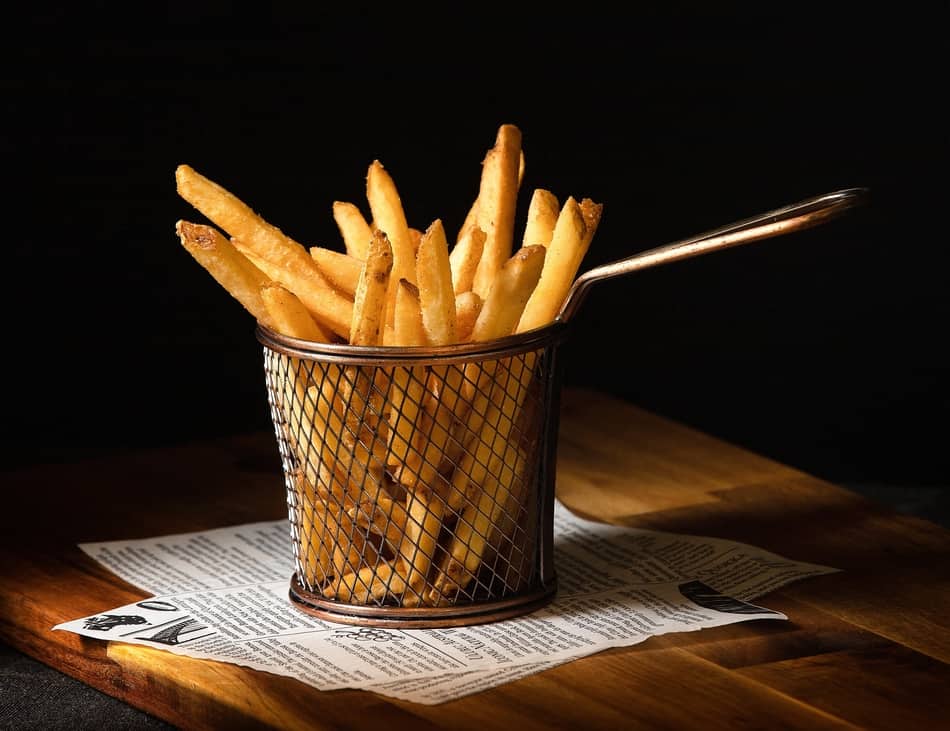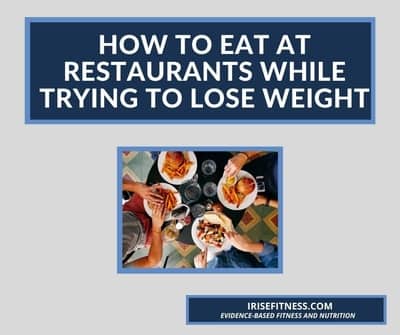
When trying to lose weight, eating out at restaurants can significantly interfere with your progress, especially if you are making it a consistent habit.
With that said, you definitely don’t need to avoid restaurants all together just because you are trying to lose weight.
Instead, follow these 10 steps to ensure you are making the right decisions when it comes to eating out when trying to lose weight.
Understand How Weight Loss/Gain Actually Works
Before I get into the specific strategies to follow, it is very important you actually understand how weight loss and weight gain works. Not just that you need to eat less and exercise more – but the process that actually goes on.
That way, you can feel confident going out to eat because you know what you need to do to continue losing weight.
To learn more about how weight loss actually works, check out my 3 part series, starting with this article here.
Alright, now that you know how weight loss works, let’s jump into the strategies you can use to keep the pounds coming off even when going out to dinner.
1. Plan In Advance
Understand that food at restaurants is naturally going to be quite high in calories seeing as restaurant food is loaded with high calorie oils and butter.
So if you know you are going to be going out for a nice lunch or dinner, the number one thing you can do is plan ahead.
By plan ahead, I mean control the meals you can control best. If you know you are going to a restaurant for dinner, odds are you’re going to eat a good amount of calories.
So for breakfast and lunch, make sure you are more strict with your nutrition, opting for lower calorie meals. And avoid snacks that day.
For breakfast, you could have oatmeal, or fruit, or you could even skip breakfast altogether (no, skipping breakfast is not bad for you – intermittent fasting actually has benefits and some people like the way it makes them feel).
For lunch, opt for something light and healthy, such as a big salad.
Think about it. If you had a 400 calorie breakfast and a 400 calorie lunch, you could eat 1200 calories at dinner and still not go over 2000 calories for the day!
The bottom line here is to plan your day. Don’t eat a 1000 calorie breakfast burrito, pizza for lunch, and then a massive restaurant meal for dinner. That’s not going to cut it.
2. Plan Backwards
If you know you’re going out to dinner, then track your calories for dinner at the beginning of the day. If you know what you might have for dinner, then figure out about how many calories it is (overestimate it because it’s probably more than you think it is) and track it.
Let’s say you’re going to have some of an appetizer, a drink, and an entrée. You might have 200 calories for some of the app, 200 for the drink, and 800 for the entrée. That is 1200 calories. Side note: that is not many calories for going out to dinner. 200 calories of an appetizer and 800 for an entrée is low, but you get the point. So if you’re going for 1800 calories, then you can work backwards and eat 600 calories before dinner that day.
“But 600 calories is hardly anything.”
Tough luck! If you’re trying to lose weight, you have to make sacrifices. You can eat less during the day, or eat less at the restaurant. It’s up to you, but you can’t expect to eat whatever you want all day and still make the progress you’re looking for.
Skip breakfast or have some fruit or oatmeal, eat a lighter, healthy lunch, load up on water throughout the day, and avoid snacking during the day. Then enjoy your dinner!
3. Stick To The Main Entrée
If your goal is to lose weight, then when you go out to eat, you’re going to have to make some sacrifices. You can’t have bread, apps, an entrée, dessert, and drinks and expect to make the progress you’re looking for (unless it’s a one time thing obviously, but even then, better to not go crazy!).
Instead, be smart about the meal.
Try to stick to the main entrée as best as you can.
Of course, what you eat is up to you, but you can’t have everything. The more you can stick to your main meal and avoid everything else, the better off you’ll be keeping your calories down.
4. How To Pick Your Entrée
When it comes to choosing an entrée, opt for something that is lighter and has a smaller portion size.
Ideally, I’d avoid fried food as it’s going to be much higher in calories because of the oil. Even sautéed foods at restaurants are going to have lots of oil.
I would recommend choosing three of your top choices off the menu and then ask your waiter or waitress what he/she recommends to be the lightest/healthiest meal.

5. Stop Eating When You’re 80% Full And Take The Rest To Go
While you shouldn’t stop eating if you’re still hungry, a great strategy is to stop eating when you’re 80% full and box up some of the meal to bring home for the next day.
Restaurant portions are larger than normal and the research is clear that more food that’s in front of you, the more you’ll eat.
So be mindful of this, stop eating before you’re stuffed to the brim, and take the rest to go.
6. Watch The Sides
The classic example of this is instead of getting a burger and fries, just get a burger and omit the fries or get a side salad (but watch the dressing and get it on the side!)
The “side” can often be close to the same number of calories as the entrée, so it’s best to avoid them when possible unless you choose a healthy, low-calorie food.
You could easily eat 500 calories of fries on the side.

7. Avoid Apps and Bread
As I hinted at earlier, when eating at restaurants, you need to make sacrifices.
One of the best sacrifices you can make is to avoid the bread and apps.
Appetizers tend to be very high calorie, oily, oftentimes fried foods that are going to dramatically increase the caloric density of your dinner. Now it’s not to say you can’t have them, but it is to say they need to be accounted for.
If I were you, I’d put my attention towards the entrée and away from the bread/apps.
8. Liquid Calories
Don’t underestimate the significance of drinks.
Drinks oftentimes contain far more calories than you’d expect so again, it’s not to say you can’t have any, but be mindful of them and make sure they’re accounted for.
In general, if you are trying to lose weight, I suggest really try to avoid drinking your calories because it won’t fill you up and you could be using those calories to eat food that will both fill you up.
Now when you’re out to eat, you might want to enjoy a drink so just be mindful of it, don’t go overboard, and make good choices.
Just so you’re aware, here’s the calorie content of alcoholic beverages:
- Beer: 8oz ≈ 120 calories (let’s be honest, you’re probably having 16oz per drink, so 240 calories:)
- Wine: 5oz ≈ 120 calories (You’re probably not just having 5oz…)
- Hard alcohol: 1.5oz ≈ 100 calories (you’re likely not drinking this straight up, so you need to account for juices/whatnot)
Bottom line: it is very easy to quickly drink calories, so avoid it when possible and if you do choose to have a drink, try to limit it to one drink and choose one that’s going to be lower in calories, such as a vodka soda.
Looking at the example above, 5oz of wine is hardly anything. You could easily have 10-15 ounces (240-360 calories), which is a significant amount of calories.
9. Stay Hydrated
Regardless of whether you are eating at your house or at a restaurant, it’s very important to stay hydrated.
One of the main benefits of drinking enough water with the goal of losing weight is that it helps to increase satiety.
This study showed that participants who drank 16.9 ounces of water before their meals showed a 44% reduction in weight loss after 12 weeks compared to those who did not drink water before their meals.
So the bottom line is to continue drinking water from the time you sit down, to the end of your meal, as that will help you avoid overeating.

10. Watch For “Sneaky” Calories on Salads
Often, people think that salads are essentially no calories, but at a restaurant, that might not be further from the truth.
It’s important to understand that the calories aren’t in the lettuce – they’re in the high calorie toppings and dressings.
Think toppings like cheese.
Did you know that the average salad at a restaurant contains 1,000 calories? That’s a LOT of calories!
So it’s not to say a salad “is bad.” Of course it’s not – you just need to be aware of this.
So follow these 2 principles when ordering salad at a restaurant:
- Watch the dressing/ask for it on the side: The dressing is definitely high in calories so avoid pouring it all on top of your salad – just use what you really need. Ask for the dressing on the side so you can be in control of it.
- Avoid high calorie toppings: things like meat/cheese are going to be high in calories and make your salad one of those 1,000 calorie salads.
By doing those two things, you’ll likely cut the calorie content of the salad in half.
11. Increase Your “Output” Throughout the day
While I do not recommending working out more and exercising more in order to burn off calories so you can eat more, if your mindset is right, you can increase your output to allow you to not put you in a calorie surplus at the end of the day.
Let’s say you normally take 6,000 steps per day and you’re eating 1,800 calories per day.
If you know you’re going out to eat later, you could try to go on an extra walk and get 10,000 steps that day, knowing that increasing your output (the calories you burn) will allow you to eat slightly more and not have it make as big of a difference. Those 4,000 steps will burn roughly 250-300 additional calories, which can help keep you from being in a calorie surplus.
Note: I DO NOT recommend doing this as a normal part of life. I think you should take more steps each day to improve your health and increase your output. But I do not recommend doing it with the mindset of “now I get to eat more.” That is not a healthy way to think about exercise and it’s not the mindset I want you to have.
12. Track Your Calories
If you are trying to lose weight and you don’t have a very strong understanding of exactly how much food you can eat and still lose weight, I strongly recommend tracking your food intake for a short period of time.
While tracking your calories isn’t “required” for weight loss, it is a good starting point for many people who need a better understanding of the amount of food they are actually eating. After all, research shows that individuals consistently underreport how many calories they believe they are eating.
This will be another way you can hold yourself accountable while eating at restaurants.
While there are many ways you can track the number of calories you eat, I suggest using a simple free app like My Fitness Pal. This is an easy to use app where you input the foods you eat and it tracks your daily caloric intake for you.
Keep in mind that when you are tracking your food, you need to track everything you eat and drink. The butter on your toast, the oil on your food, the alcohol you drink. These foods/drinks are often overlooked, but it all adds up and needs to be counted.
If you want a more in depth article I wrote on how to track your calories, check that out here.
Your Mindset
“One Day Over Your Calories Isn’t The Issue – It’s Your Consistency”
Let’s face it – there are going to be days you eat too much and go over your calories.
But trust me, it’s not going to be the one day per month you do this that stalls your progress.
It’s going to be you consistently falling “off track” and not getting back on track.
So if you happen to go over your calories one day, don’t worry about it at all. Just get back on track. Don’t use that as an excuse to go crazy the entire weekend, have 10 drinks, eat entire pizzas, devour the dessert, and more.
Here’s an analogy I like to use.
If you got a flat tire on the road, you wouldn’t slash the other 3 tires because one of them got flat.
By the same token, don’t go haywire just because you went over your calories one day.
It’s normal. It will happen. Just get back on track, stay consistent, and you’ll see the results you want to see.
Conclusion
I wanted to finish off with this section because I think it’s one of the most important things you can take away from this article.
When it comes to your goals, if you truly want to lose weight, better your health, and take control of your life, you need to keep your goals in the forfront of your mind.
You can’t go through life like you always have, not making any changes, and expect to see the results you want to see.
You need to hold yourself accountable.
That isn’t to say you can’t eat food away from your house at restaurants. You definitely can. And you should still enjoy it. But you do need to make choices that align with your goals.
Like I said earlier, you can’t have a 1000 calorie breakfast burrito, pizza for lunch, and then go out to dinner and have bread, apps, your entrée, drinks, and a dessert.
Instead, be mindful of your choices, nail down a good breakfast and lunch, and then be smart at dinner (including the tips I have talked about in this article) and that’s how to eat out while still making progress towards your goal.
Online Plant-Based Fitness and Nutrition Coaching
So if you are looking for a coach (who understands a plant-based diet) to help keep you accountable and create a plan specifically for you, I recently opened up a few spots for my online fitness and nutrition coaching. Here’s what it includes:
- Customized workout routine that is tailored to your goals based on your schedule/available equipment.
- Tailored plant-based nutrition coaching so you can reach your goals while optimizing your health.
- Integrated support system that allows you to be held accountable throughout your journey.
If you’re interested in working with me so you can reach your fitness and nutrition goals, feel free to reach out as I’d love to talk more about whether we might be a good fit for each other. Find out more here!

